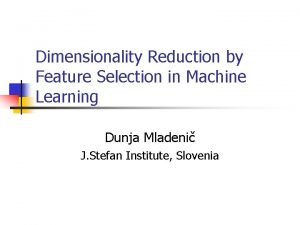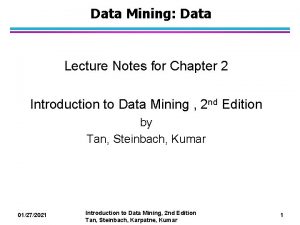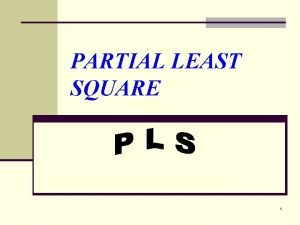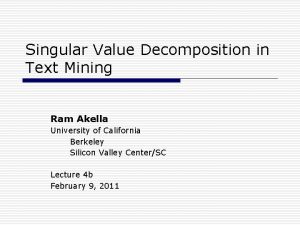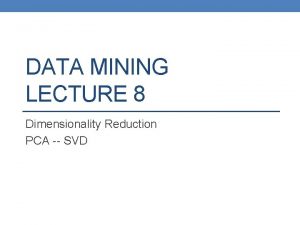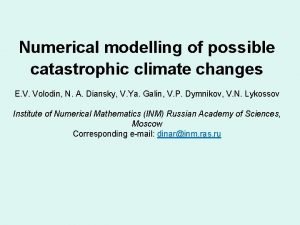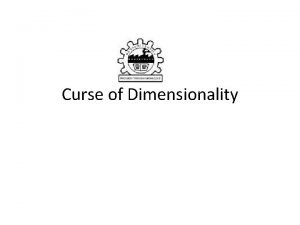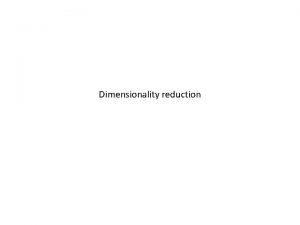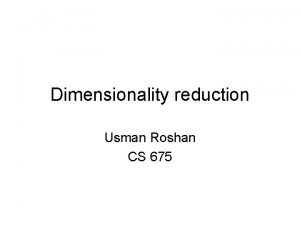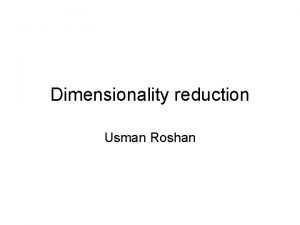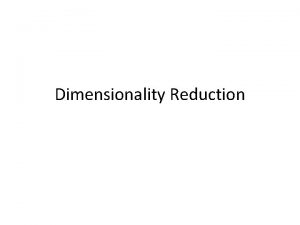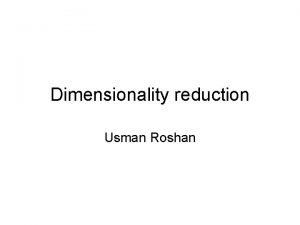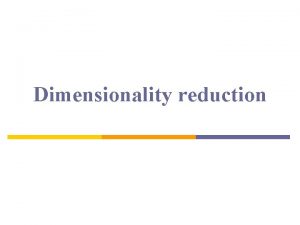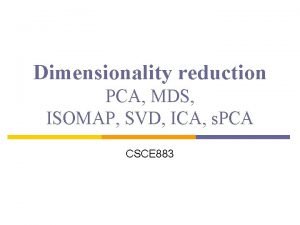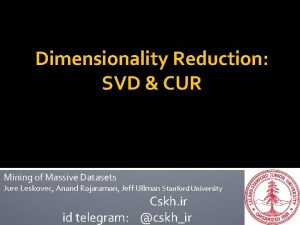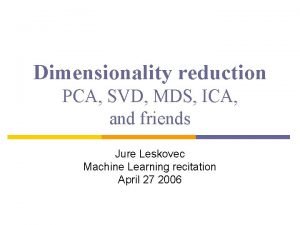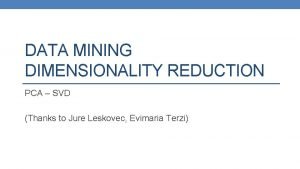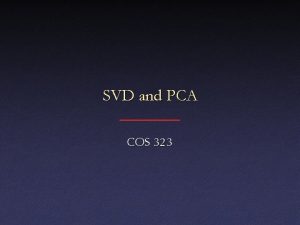PLS Vs SVD in Dimensionality Reduction Paul Hsiung















- Slides: 15

PLS Vs. SVD in Dimensionality Reduction Paul Hsiung December 3, 2002 16 -811

Problem • • Curse of dimensionality Very sparse data: • A lot of 0’s • Some attributes irrelevant • Others are repeated • • Many machine learning algorithm are infeasible at high dimensions. Compound dataset example…

SVD Quick Review • • • Find the axis with greatest variance. Project your data unto this axis. Let the top n eigenvectors be the space of your new decomposed data. x 2 e 1 x 1

Partial Least Squares: Intuition 1 • • • SVD max the variance of X, PLS max the covariance of X and Y. SVD does not factor in Y when decomposing. A good picture would be…

Linear Regression • • • Given data output Y, input X Find a w such that w. Tx best approximates Y in the least square sense. The magical formula for w is y w 1 x

PLS: Intuition 2 • • Problem with linear regression is… PLS does as the name says, it finds the least squares except it’s partial. As it builds Bpls, it will decompose X into T We can control how many dimension T has by the number of iterations in PLS

PLS: No Guts, No Glory

PLS: Aftermath • • Collect all small t 1…tn into T. Same for P, B, and W. Notice that T is s x n and that’s our decomposed dataset. We define. R will transform any X into T. Prediction is done by Q is a column of 1’s.

Dataset • • Training set is 26, 000 by 6000. Test is 1, 400 by 6000. Single output Very sparse… lots of 0’s Used ROC curve to rank results.





PLS: Overfitting 5 Dim Predict Training 0. 853 Predict Test 0. 862 10 Dim 0. 927 0. 870 20 Dim 0. 954 0. 866 100 Dim 0. 966 0. 820

Conclusion • • • PLS at dim 10 is equivalent to SVD at dim 100. But SVD is slightly better in the high dimensions. PLS tends to overfit after dim 10. PLS as a predictor works pretty well.
 Dimensionality reduction in machine learning
Dimensionality reduction in machine learning Dimensionality reduction
Dimensionality reduction What this picture means
What this picture means Nlp dimensionality reduction
Nlp dimensionality reduction Dimensionality reduction in machine learning
Dimensionality reduction in machine learning Ott pressure transducer
Ott pressure transducer Nnnxy
Nnnxy Pls 13 gang
Pls 13 gang Pls 4444 toeic
Pls 4444 toeic Application domain and execution domain
Application domain and execution domain Pls take care of yourself
Pls take care of yourself Svd text mining
Svd text mining Svd
Svd Svd nedir
Svd nedir Svd
Svd Svd
Svd
